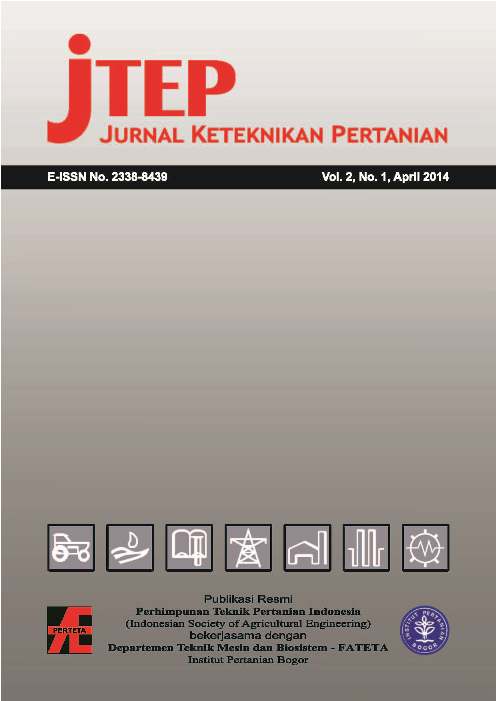Modifikasi Nosel pada Sistem Penyemprotan untuk Pengendalian Gulma Menggunakan Sprayer Gendong Elektrik
Abstract
Abstract
This research aimed to modify the Nozzle of spraying system on the sprayer output to reduce the shift in spraying points on sprayed granules as a result of the wind blow from the environment. This electric sprayer consists of several components which are not found in a power sprayer or manual sprayer such as a 12-V battery or a 5.8 bar-pressure water pump. The result of the pressure comparison on the outlet showed a significant difference, namely in a 3-bar manual sprayer and a 4-bar electric sprayer. The pressure difference resulted in the difference in discharge, the length and width of the spraying.
Keywords : discharge, electric, manual, pressure, sprayer
Abstrak
Penelitian ini bertujuan untuk memodifikasi Nosel pada system penyemprotan yaitu pada hasil keluaran sprayer untuk mengurangi pergeseran titik semprot pada butiran semprot yang timbul akibat adanya
dorongan angin dari lingkungan. Sprayer elektrik terdiri dari beberapa komponen yang tidak terdapat pada power sprayer maupun manual sprayer seperti aki 12 V, pompa air tekanan 5.8 bar. Hasil perbandingan
tekanan pada lubang keluaran menunjukan perbedaan tekanan yang cukup signifikan, yaitu pada sprayer manual 3 bar dan sprayer elektrik 4 bar. Perbedaan tekanan tersebut mengakibatkan adanya perbedaan
debit, panjang penyemprotan dan luas penyemprotan.
Kata Kunci : debit, elektrik, manual, sprayer, tekanan
Diterima: 12 November 2013;Disetujui:27 Februari 2014
Authors
Authors submitting manuscripts should understand and agree that copyright of manuscripts of the article shall be assigned/transferred to Jurnal Keteknikan Pertanian. This work is licensed under a Creative Commons Attribution-ShareAlike 4.0 International License (CC BY-SA) where Authors and Readers can copy and redistribute the material in any medium or format, as well as remix, transform, and build upon the material for any purpose, but they must give appropriate credit (cite to the article or content), provide a link to the license, and indicate if changes were made. If you remix, transform, or build upon the material, you must distribute your contributions under the same license as the original.

